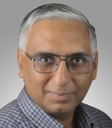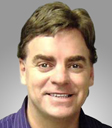| Time |
Agenda |
|
| 09:00 – 09:05 |
Welcoming Speech, Opening Remarks & Thank You Sponsor Speech by Summit Producer |
|
| 09:05 – 09:15 |
Conference Introduction by Chairperson
Highlights on Summit Day 1 Key Sessions
|
|
|
|
|
|
Breakthroughs in Stem Cell Research & Innovation |
|
|
Stem cell research and application have gone a long way since its discovery. Nonetheless, it is still a complex stream of science with countless more mysteries to uncover.
In the first part of the summit, you will have the chance to look at the latest breakthroughs in the stem cell research. Notable experts in the field will walk you through new findings in stem cell biology, the application of innovative tools to improve stem cell manipulation, as well as how research has paved way for medical applications. |
|
| 09:15 – 09:45 |
Breaking Research in Stem Cell Biology |
|
|
- Current stage of international stem cell research
- Improvements in research technology and methodologies
- Isolation
- Expansion, generation
- Differentiation
- Delivery
- Integration
- Transplantation
|
|
|
|
|
| 09:45 – 10:15 |
Applying Machine Learning & AI in Understanding Stem Cells |
|
|
- The vast differences of cells cloned from same parent cell
- Using deep learning algorithms in combination with 3D imaging to predict cellular activities
- The applications of machine learning in medical research and treatment developments
|
|
|
|
|
| 10:15 – 10:45 |
Research Breakthrough: Transplanting Re-programmed Induced Pluripotent Stem (IPS) Cell to Cure Vision |
|
|
- The differences between using self-donated iPS cells and donated iPS cells from others
- Donated iPS cells transplantation in treating degenerative eye conditions: procedures, challenges, and initial results
- Expectations of how donated iPS cells will respond
|
|
|
|
|
| 10:45 – 11:00 |
Morning Refreshments |
|
|
Innovative Methods and Technologies |
|
|
Continuing the theme of stem cell innovation, the second section of the summit will shed light on the latest tools to be used in stem cell research. In the upcoming sessions, you will learn about how gene editing tools such as CRISPR could improve the quality of stem cell research, and discover how bio-printing has been employed in tissue and organ engineering. |
|
| 11:15 – 11:45 |
CRISPR & Stem Cells: Joining Forces of Powerful Cell |
|
|
- CRISPR potentials in stem cells research
- Correcting faulty genes in iPS cells
- Increasing stem cells differentiation speed
|
|
|
|
|
| 11:45 – 12:15 |
Revolutionizing Stem Cell Generation with Bio-Printing |
|
|
- The potentials and applications of 3D printing in medical and stem cell context
- Challenges in 3D-printing cells and possible complications in medical application
- Current developments of bio-printing technologies
|
|
|
|
|
| 12:15 – 13:30 |
Lunch and Networking |
|
|
Tissue Engineering & Advanced Materials in Regenerative Medicine |
|
|
Tissue engineering and organ regeneration are among the fastest moving areas of stem cell applications that have gathered a lot of excitement in the medical field. Achievements in the field promise a transformative impact on future health care.
In the next section of the summit, you will discover the state of development of tissue engineering and regenerative medicine through various case studies on how researchers have overcome challenges and successfully create tissue/organs from stem cells.
|
|
| 13:30 – 14:00 |
Vascular Tissue Engineering in Regenerative Medicine in Diabetes |
|
|
|
|
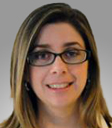 |
Speaker: Sara Vasconcelos, Assistant Scientist, Division of Experimental Therapeutics, Toronto General Research Institute, University Health Network |
|
| 14:00 – 14:30 |
Borrowing Nature’s Scaffold to Build Human Heart |
|
|
- The obstacles of growing working organ and mimicking blood vessel networks
- Growing beating human heart tissue on spinach leaf – Progress and Result
- Future directions for tissue engineering
|
|
|
|
|
| 14:30 – 15:00 |
Achievements in Kidney Regeneration |
|
|
- Using perfusion decellularization to produce acellular, bioactive renal ECM scaffolds from kidney sources
- Current shortcomings of kidney regeneration techniques
- Utilization of hPSC differentiation into kidney-specific lineages in the generation of mature kidney cell types
|
|
|
|
|
| 15:00 – 15:15 |
Afternoon Refreshment & Networking |
|
|
Overcoming Challenges of Stem Cells Applications: Reproducibility, Scalability, Delivery and Cost |
|
|
The use of stem cell in research and medical treatment still comes with countless challenges. During the past decades, scientists have been working relentlessly to overcome these challenges and only by overcoming them could effective treatments be delivered to awaiting
In the last part of Day 1 of the summit, our speakers will lead you to discover the answer to pressing issues, including stem cell expansion, delivery, differentiation, and integration. You will also have the chance to discuss the cancer risk of stem cell therapy and look at case studies of how it can be addressed.
|
|
| 15:15 – 15:45 |
Insights from the hemopoietic system into issues of measurement,
isolation, self-renewal, expansion and immortalization of precursor
cells |
|
|
- Hemopoietic stem cells are heterogeneous
- Which ones are clinically relevant and how are they distinguished?
- What is known about expansion in vivo?
- Is expansion in culture achievable?
- What mechanisms specify and regulate expansion?
|
|
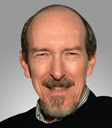 |
Speaker: Norman Iscove, Professor, University of Toronto
Norman Iscove is a Senior Scientist at the Princess Margaret Cancer Centre in Toronto. He is a pioneer in hemopoietic stem cell research with numerous contributions that advanced the field in both methodology and concept. In recent years his group identified distinct stem cells in the mouse, resolving those that engraft permanently from more abundant multipotent stem cells with prodigious but nevertheless time-limited potential. Current work is focused on mechanisms that enable self-renewal, maintain it in stem cells, and whose artificially sustained expression confers immortality to otherwise non-self-renewing progenitor cells that are lineage-restricted.
|
 |
| 15:45 – 16:15 |
Combination Strategies Enhance Tissue & Functional Repair in the Central Nervous System |
|
|
|
|
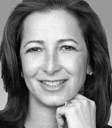 |
Speaker: Dr. Molly Shoichet, Tier 1 Canada Research Chair in Tissue Engineering, University of Toronto
Professor Molly Shoichet holds the Tier 1 Canada Research Chair in Tissue Engineering at the University of Toronto and is Senior Advisor on Science & Engineering Engagement to President Gertler. She has published over 500 papers, patents and abstracts and given over 350 lectures worldwide in the fields of regenerative medicine, tissue engineering and drug delivery. She currently leads a laboratory of 30 and has graduated 162 researchers. She founded three spin-off companies and is actively engaged in translational research. She is the only person to be a Fellow of Canada’s 3 National Academies of Science, Engineering, Health Sciences. Dr. Shoichet is the L’Oreal-UNESCO For Women in Science Laureate, North America for 2015. She holds the Order of Ontario, is University Professor, and a Foreign Member of the US National Academy of Engineering. She graduated from the Massachusetts Institute of Technology (1987) and the University of Massachusetts, Amherst in Polymer Science and Engineering (1992).
|
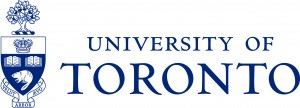 |
| 16:15 – 16:45 |
Addressing Tumor Risk Of Pluripotent Stem Cells |
|
|
- The lurking risk of mutation and tumor
- Cancer risks in stem cell therapy
- Possible strategies to address pluripotent cells’ tumorigenicity
|
|
|
|
|
| 16:45 – 17:15 |
Biomanufacturing: Finding the Answer for Stem Cell Expansion |
|
|
- The lack of effective methodologies in harvesting and growing stem cells
- New techniques and methods to improve stem cells expansion
|
|
|
|
|
| 17:15 – 17:25 |
Closing Remarks by Conference Chairman |
|
| 17:25 |
Champagne Networking Session |
|
|
Enjoy a glass of champagne whilst networking with other like-minded individuals on topics that are of most interest to you and fellow delegates. |
|






